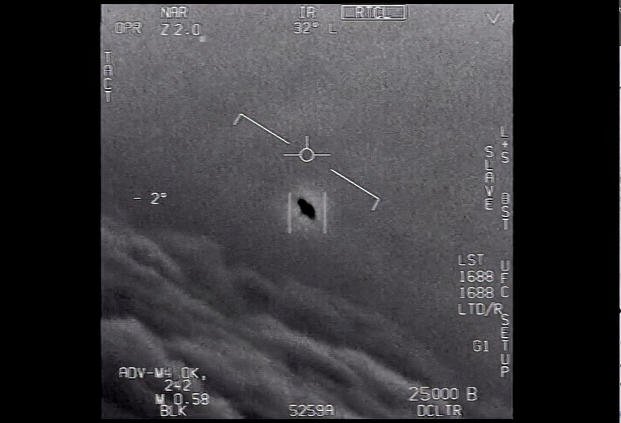A quarter century ago I explained to a friend that the whole idea was as ridiculous as a P-51 Mustang shooting down the USS Enterprise. And for a few years that got me thinking, and I had an idea for a short-ish story. Some physics whiz-kid is recruited straight out of college to Area 51, where he is shown the crashed alien spacecraft from Roswell. His studies relate to the FTL drive the Army recovered, so he's set to work trying to reverse engineer it. Eventually the team realizes that such a system can be made with modern tech, but:
1: It will be ruinously expensive, requiring large amounts of extremely rare elements
2: It will have a top speed of something like 1.5 c
3: It will require the equivalent of the entire US power grid to keep functioning
4: Amazingly radioactive
So, some of the team are thrilled: FTL is possible. Our Hero, however, doesn't like it, so he transfers to another department; studying the material the crashed vessel is made of. The various bits are proven to be incredibly tough; so tough as to shrug off all attempts at analysis. Can't melt it with anything short of a nuclear blast, can't drill it, cut it, tear it. But Our Hero wonders why, if the ship was so incredibly tough, it kerploded into bits when it crashed... to do that much damage would have required an H-bomb. Our Hero eventually concludes that the alien spaceship was *planted* here. The aliens saw humans enter the atomic age and decided that we are sufficiently scary as to require being kept out of the Galactic Federation for as long as possible. So rather than contact us and give us the warp drive that can be built in a well equipped home workshop and powered by a Briggs & Stratton, or allowing us to figure that system out for ourselves and then swarm out into the heavens spreading our hijinks all over, they deliberately gave us the *worst* form of hyperdrive ever invented. Overly complex, expensive and power-ravenous, but clearly functional. And clearly what the aliens are using, so it *must* be what works. Keep the monkey-boys busy with the crap-drive, and they'll be tied up in knots for generations.



Please tell me you've expanded this into a short story!!! And if you have, where might I get a copy?
A spark plug is metals and ceramics, though it would have required a Roman discovery of electricity to put to use.
Making one was completely within their capabilities.
So why haven'tyou written and published this story? Sounds terrific.
Seconded!
AFAIK, Twining's efforts were not classified higher than SECRET.
You realise this sentence has absolutely null value?
That question indicates that you have
no clue how classification works at all.
A letter or report classified Secret can have paragraphs that are unclassified, confidential, or secret.
It cannot contain any material classified Top Secret or "above." (Not really "above" so much as compartmentalized into smaller and smaller groups that are specifically briefed into any given codeword group. I am not aware of any codeword groups that held further codewords inside them, they're all equally TS-codeword officially. Arguably the "Yankee White" Presidential Aide codeword
that is automatically assumed to have Need To Know for any and all programs is the only classification "above" Top Secret, but it's still written as Top Secret - Yankee White. And yes, that particular keyword and the statement about of assumed NTK is unclassified.)
One of my favorites from when I was in the Navy was a report on a particular submarine's continuing nuclear power training program, it had a sentence in there that read something like "Tests were insufficiently rigorous, in that there were no overall examination failures, and no individual question failures." Because my Dad was a teacher, I asked if that particular sentence was classified so I could share it with him. It's not classified, though the overall report was Confidential - Restricted Data IIRC (it's been almost 20 years since I worked on it as the Squadron Yeoman).
And yes, the Navy's Nuclear Power training pipeline is
that evil, tests
must be so hard that at least one person will not pass, and at least one question per test must be so hard that none of the crew can answer correctly. All so that remedial training can be assigned to at least one individual for failing the exam, and given to the entire engineering department on that subject for failing the question.
As to those "oblique references"?
(1) The possibillity that these objects are of domestic origin - the product of some high security project not known to AC/AS-2 or this Command.
(2) The lack of physical evidence in the shape of crash recovered exhibits which would undeniably prove the existence of these subjects.
(3) The possibility that some foreign nation has a form of propulsion possibly nuclear, which is outside of our domestic knowledge.
Those aren't references, because (1)
would have been redacted or more likely never put into the memo in the first place if there was such a program in the US. (2) is a simple statement that they didn't have any crash remains. (3) is an acknowledgement that someone else may have such a propulsion system, and
also would have been redacted if the US
did have any knowledge about the existence of such.

